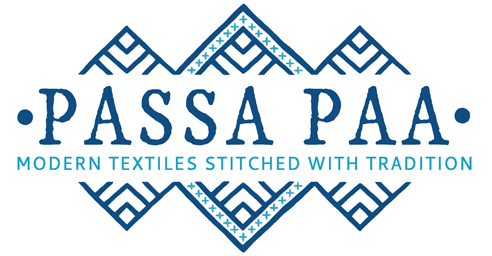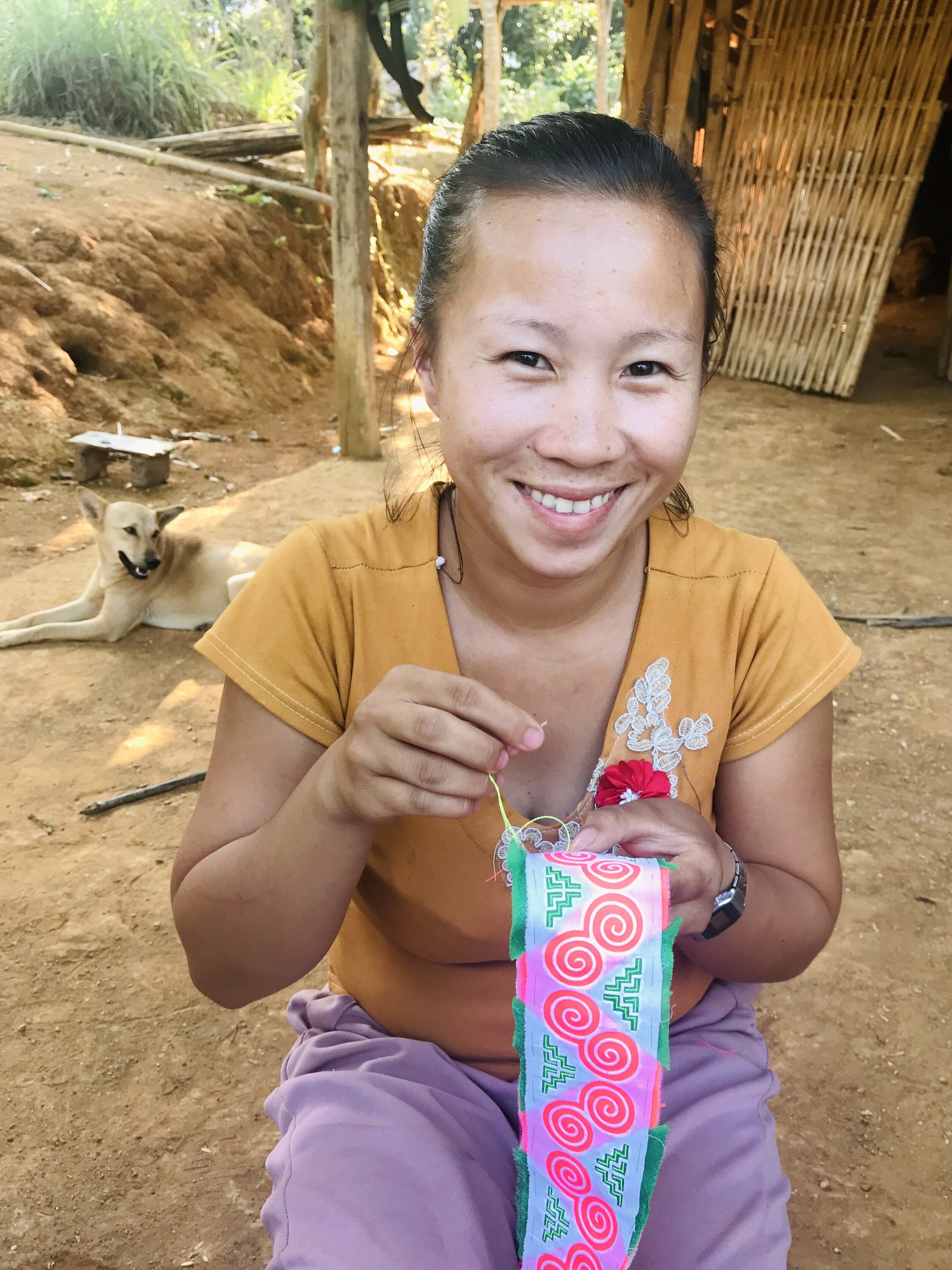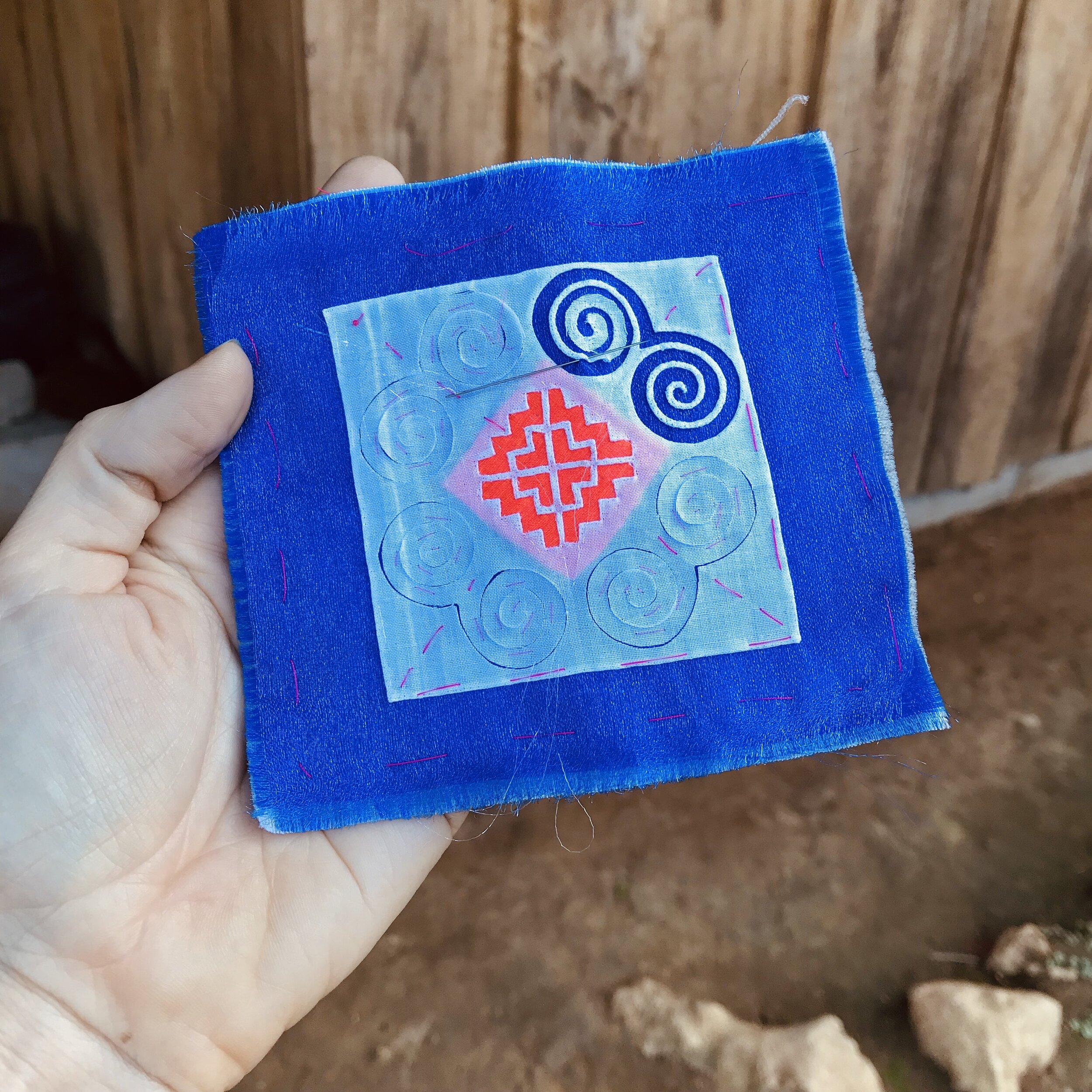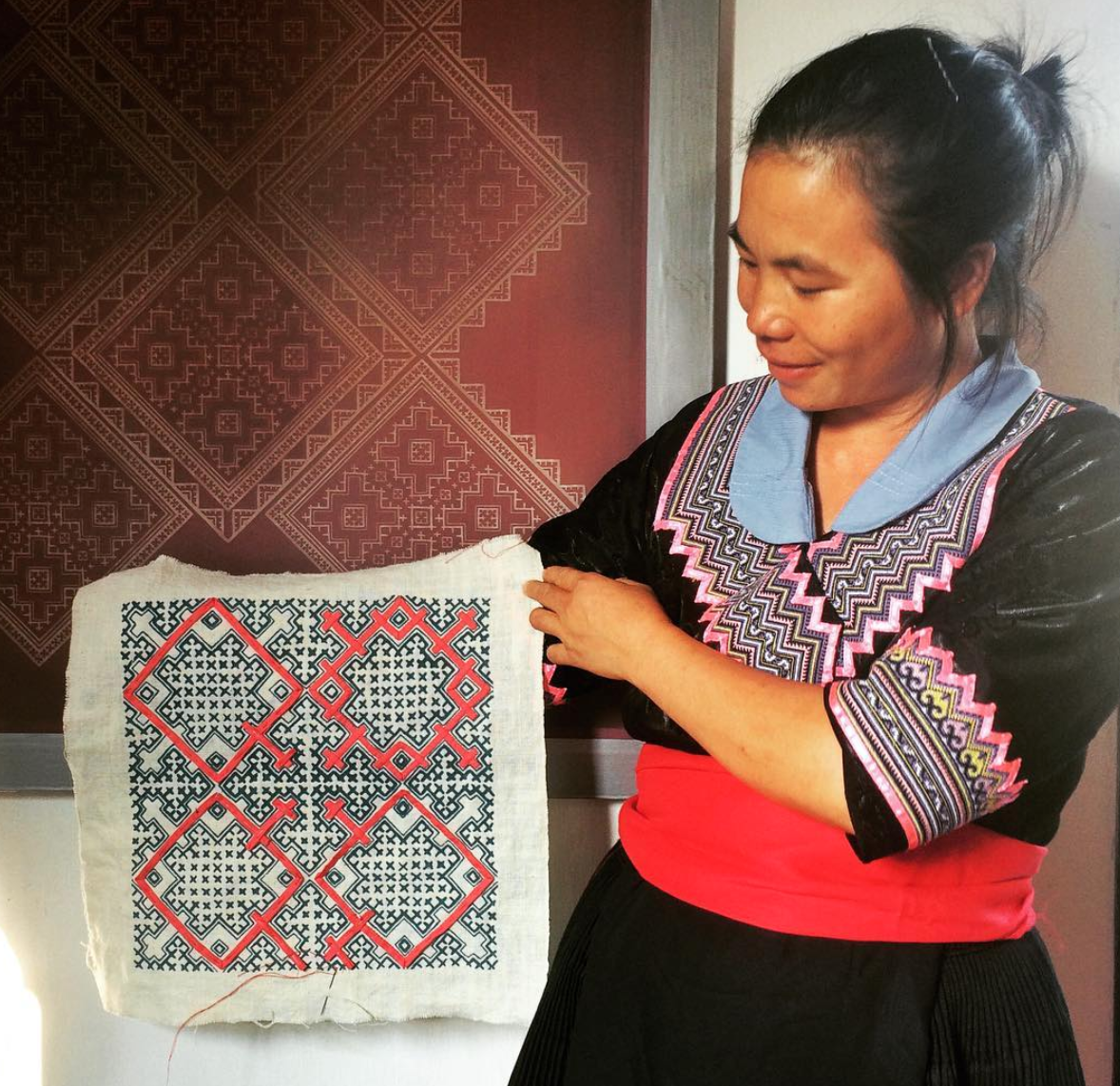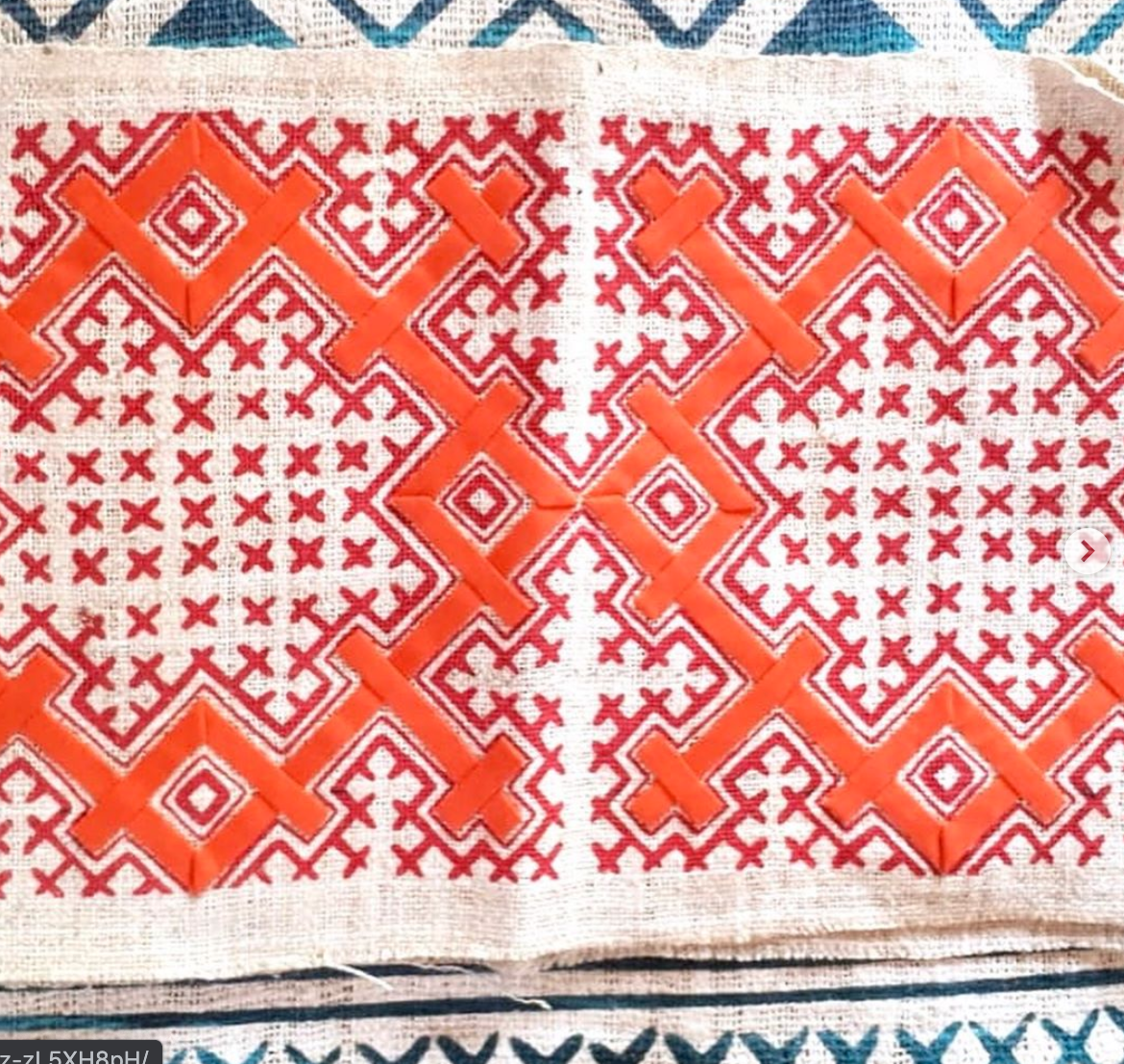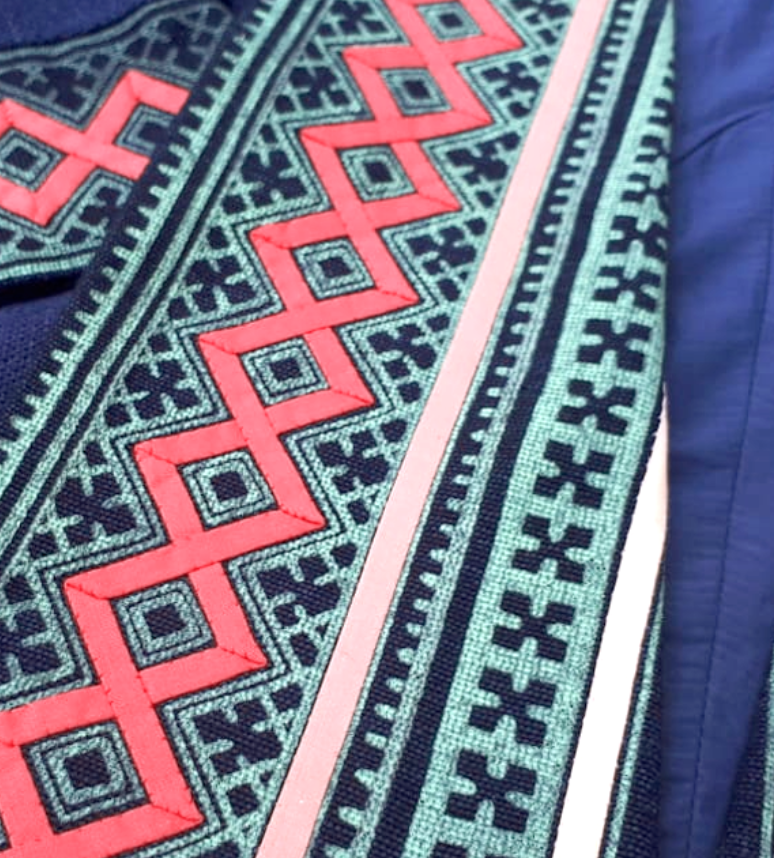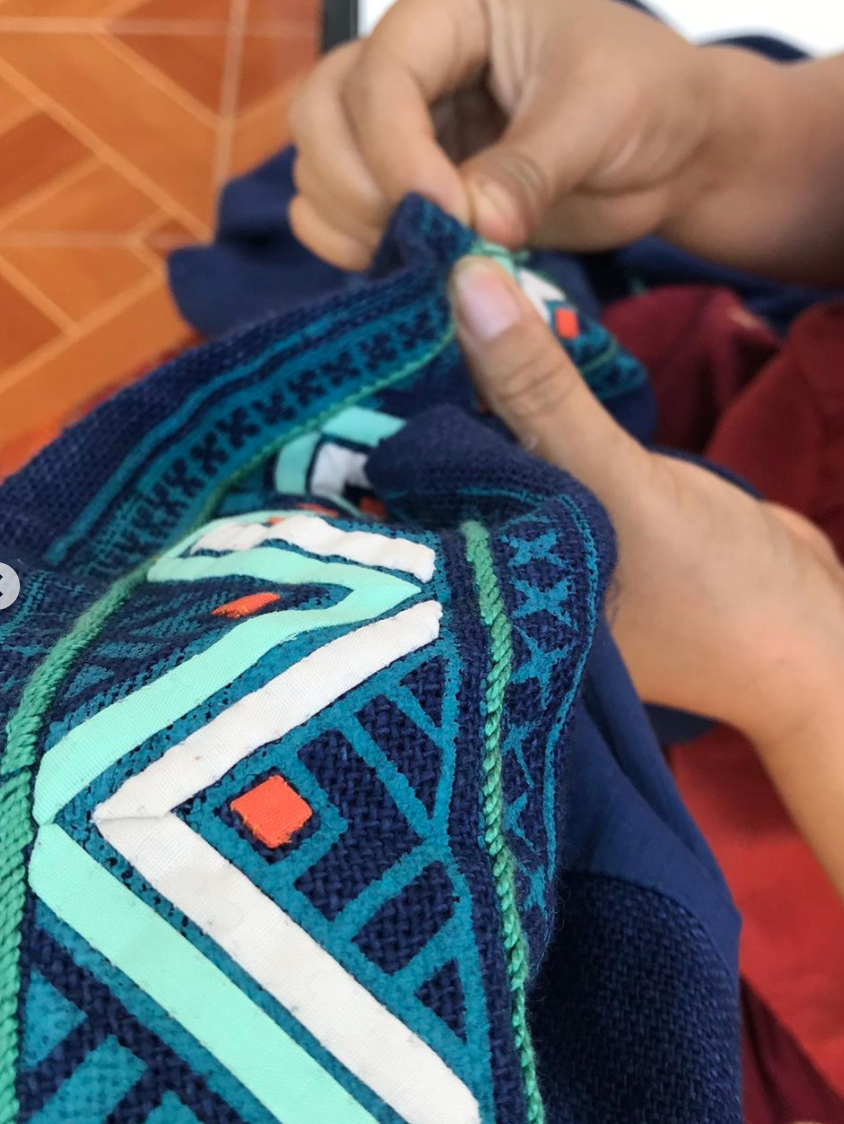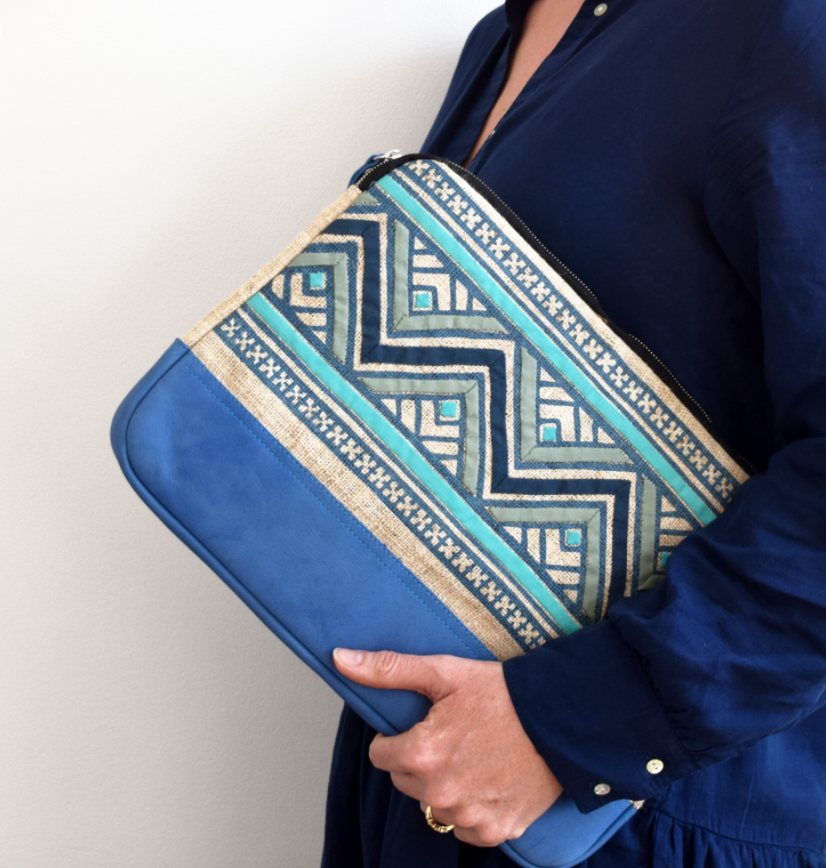The art of appliqué and it’s cultural value
Indigo dyeing, hemp weaving, embroidery, cross stitch and appliqué, have a major role in Passa Paa not only because of their beautiful results on our products but also because of their high cultural value. All these techniques started centuries ago and have passed from generation to generation and evolved in time to what we use daily at our studio in Luang Prabang.
This time, we want to highlight appliqué. What is it exactly?
Well, if you know Latin or French (or even Spanish) the word says it all: basically it means to join or attach. Everywhere we read about it we find that most studies assume appliqué has been around since the first fabrics were made. Indications of the first appliqué creations are found on the household items of the Egyptians. Fabrics would sometimes tear, creating a whole that had to be fixed. Soon, a piece of fabric was sewn on top and voilá! the technique was created. With time, appliqué evolved into a form of decoration instead of necessity. The little pieces of fabric sewn to the larger piece of fabric started creating symbols, had different colors and added texture to the fabric.
For Hmong people, fine needlework like appliqué has always been a big part of their culture. Usually done by the community women and taught to the daughters, it brings great pride since it is a big part of the dress code for the most important celebrations and events like births, weddings and New Year amongst others. The symbols stitched have evolved over time and even though the meaning of such symbols usually have a relation with nature and animals, all studies point to the fact that there is most certainly not only one meaning per symbol.
Always aiming to learn more about this Hmong tradition. Pok and Heather, the Passa Paa founders embarked on a short journey to Ban Long Lau on Luang Prabang Province to learn from Hmong women who have done appliqué all their lives. The research trip was so valuable because they learned the techniques these artisans use, making it easier to go back to the studio with these skills in mind and start designing accordingly. Once samples have been made in the studio Pok and Heather return to the village and join forces with the artisans. The pictures above also show another technique in appliqué called reverse appliqué which basically uses holes and shaped cuts in a top fabric layer to bring the bottom cloth to the surface. Neither technique is easy and both take years to master.
“Visiting the artisans and trying to understand their applique techniques is a valuable exercise to learn just how much patience, time and detail goes into their craft, not to mention how many times we stab our fingers with the sewing needle! ”
At the Passa Paa studio we currently work with talented Hmong stitch artisans who make the samples for other Hmong ladies who prefer to stitch in their homes. From wall hanging artwork to clutches, computer cases and bags, we find a way to combine our signature prints with their hand-stitched magic.
Not only are we proud to showcase Hmong appliqué in our shop and products but we are constantly learning and aiming to give more artisans a space to show their skill. These artisans earn additional income while maintaining alive an important aspect of their culture.
While researching appliqué it was very interesting to us to see how this technique appears in different countries and cultures in the world so we thought we could share some links in case you are curious!
To learn about appliqué technique in Panamá called Mola:
https://www.panama-mola.com/english/what-are-molas/origin-of-molas/
Appliqué in Indian culture:
https://www.unnatisilks.com/applique-work-introduction-indian-embroideries.html
Read more about Abomey, appliqué technique in Benin, Africa:
https://tdsblog.com/abomey-applique/
We hope you enjoyed taking a closer look to the art of appliqué and its cultural meaning. Like us, we hope next time you see any piece with appliqué, you take a minute to look at the detail and reflect on the amount of time and many conversations that happened while that piece was being made.
If you are interested in purchasing any of our hand made products, head to our shop!
